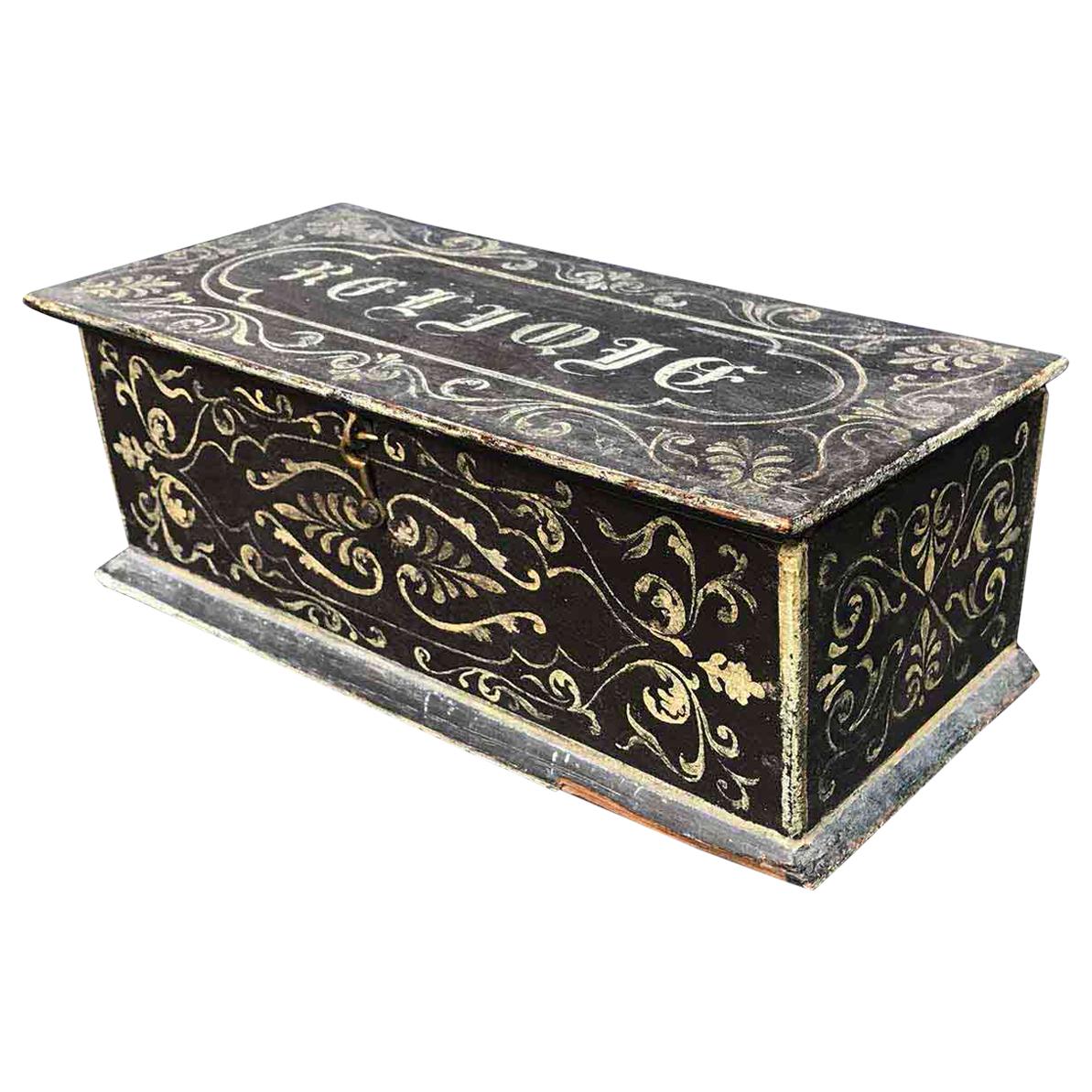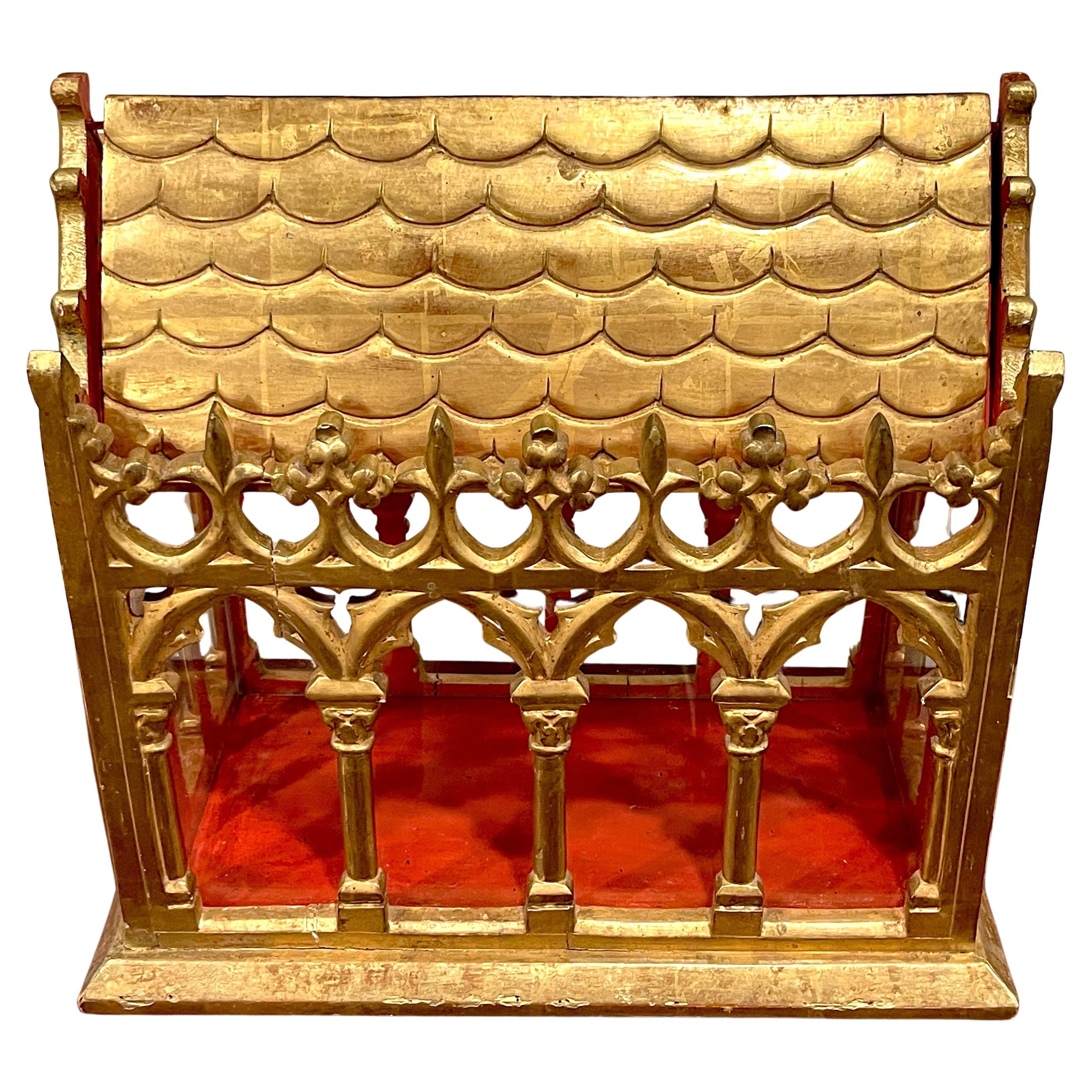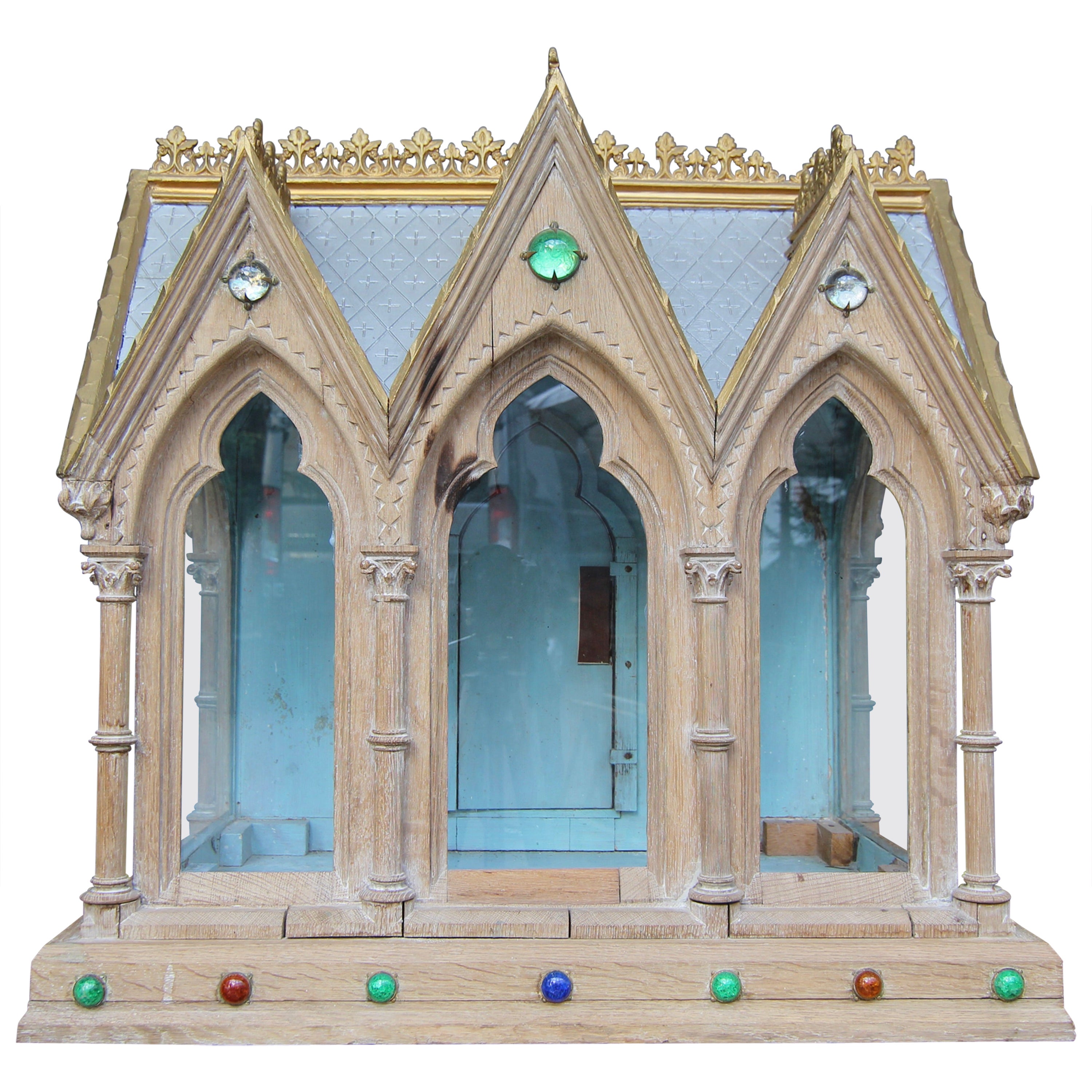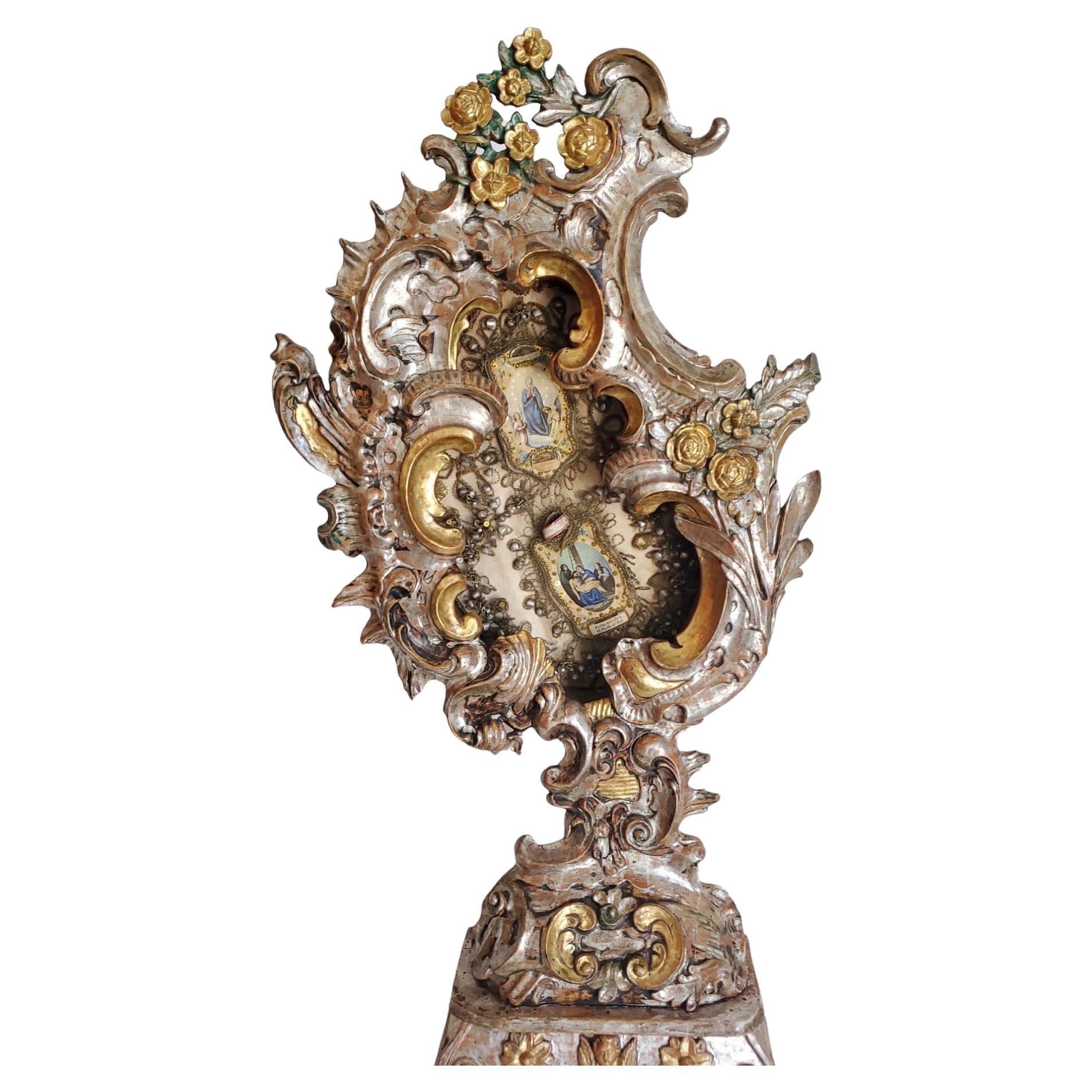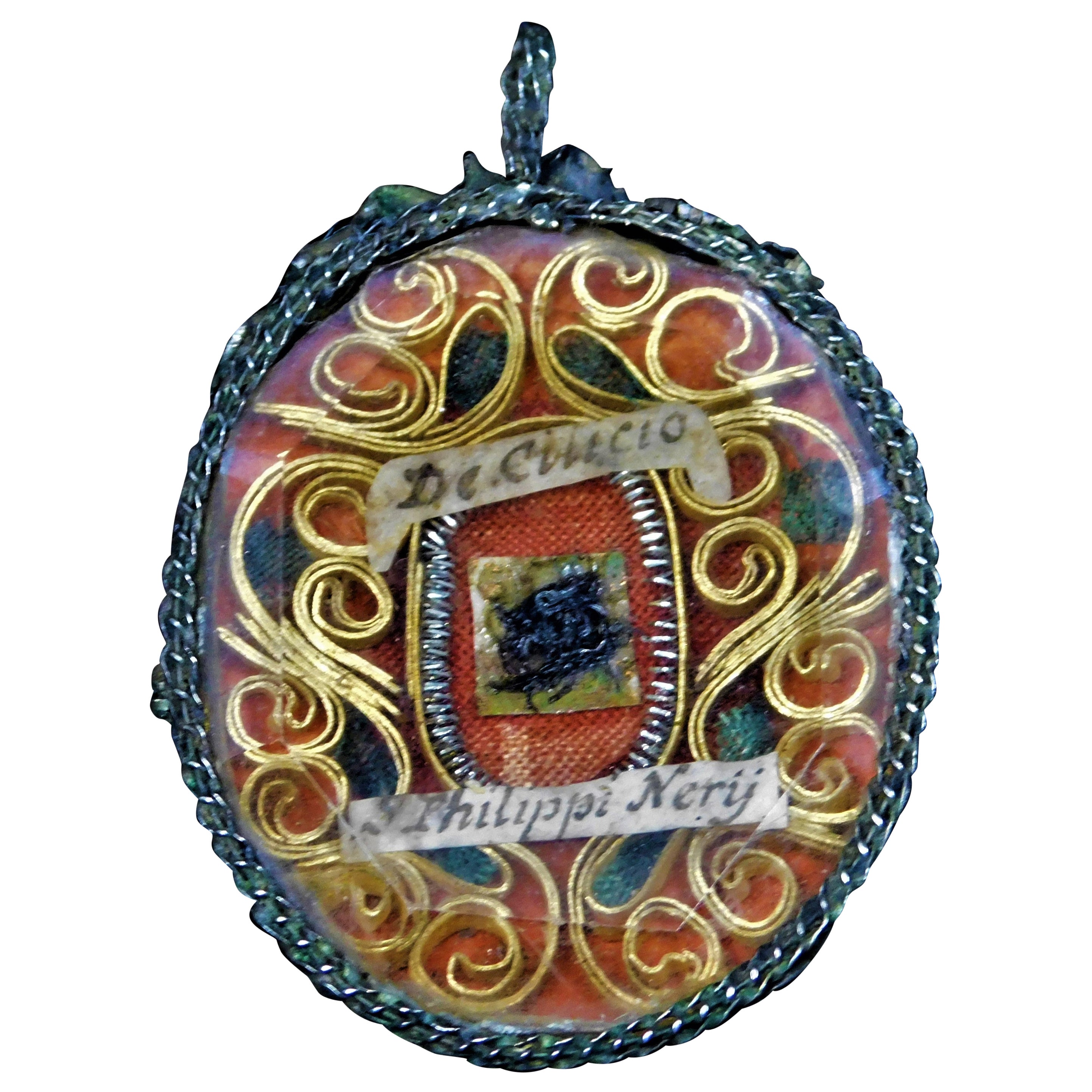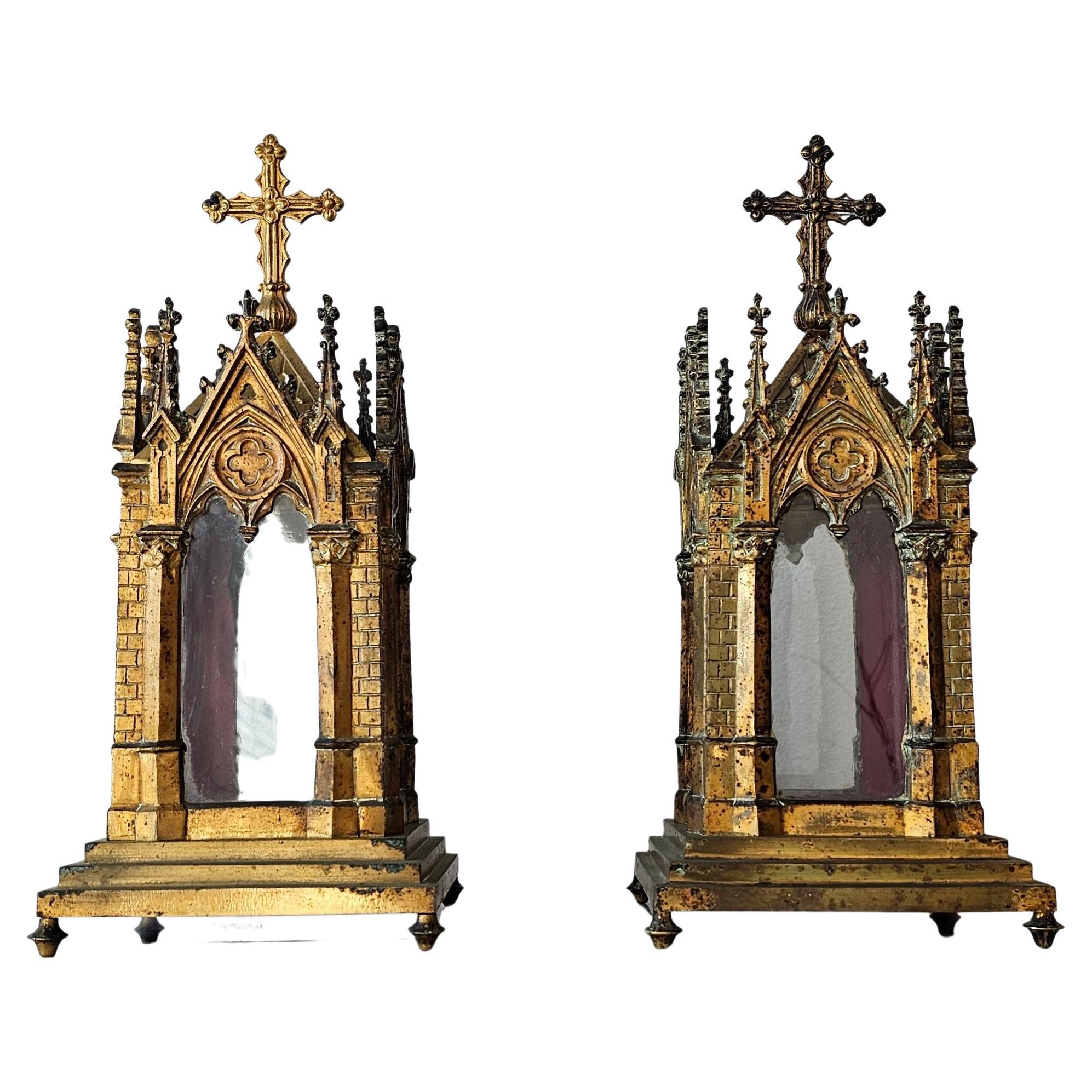Items Similar to Early 19th Century Rustic French Catholic Reliquary Box
Want more images or videos?
Request additional images or videos from the seller
1 of 8
Early 19th Century Rustic French Catholic Reliquary Box
About the Item
This is a very early French reliquary box used to hold personal articles such as a crucifix. The front door opens to reveal one wall in silk. The piece is in original condition.
- Dimensions:Height: 23 in (58.42 cm)Width: 20.5 in (52.07 cm)Depth: 15 in (38.1 cm)
- Style:Baroque Revival (Of the Period)
- Materials and Techniques:
- Place of Origin:
- Period:
- Date of Manufacture:1820
- Condition:Wear consistent with age and use.
- Seller Location:Kennesaw, GA
- Reference Number:1stDibs: LU5456231090432
About the Seller
5.0
Platinum Seller
These expertly vetted sellers are 1stDibs' most experienced sellers and are rated highest by our customers.
Established in 2005
1stDibs seller since 2020
314 sales on 1stDibs
Typical response time: <1 hour
- ShippingRetrieving quote...Ships From: Kennesaw, GA
- Return PolicyA return for this item may be initiated within 1 day of delivery.
More From This SellerView All
- 19th-C. Rococo Style Carved Wood Italian Putti / Cherub / Angel Ornaments, S/3Located in Kennesaw, GAThis is a set of three 19th century Rococo style carved puttis that have been modified into holiday ornaments. They are hand painted and show some age appropriate wear. Many of the l...Category
Antique Late 19th Century Rococo Religious Items
MaterialsWood
- 19th Century French Rococo Revival Carved Giltwood Mirrors, PairLocated in Kennesaw, GAThis is a lovely pair of 19th century French carved giltwood mirrors. They have a lovely carved shell motif. Note the hand hewn jointery at the corners!Category
Antique Late 19th Century French Rococo Revival Wall Mirrors
MaterialsMirror, Giltwood
- Early 19th Century French Louis XIV Style Carved Marble Top Center / Side TableLocated in Kennesaw, GAThis is a beautiful early French Louis XIV style center table with serpentine marble top. The top is not attached. Note the beautiful pati...Category
Antique Early 19th Century French Louis XIV Center Tables
MaterialsMarble
- 19th-C. Rustic English Country Pine Chest / Commode W / Porcelain KnobsLocated in Kennesaw, GAThis is a large scale 19th century English carved pine chest or commode with porcelain knobs. The drawers have dovetail construction. It has age appropriate patina.Category
Antique Late 19th Century English Rustic Commodes and Chests of Drawers
MaterialsPorcelain, Pine
- 19th Century French Carved Giltwood Triptych Form MirrorLocated in Kennesaw, GALove this! This is a 19th century French carved giltwood triptych form mirror. Although adapted to be wall mounted, at one point, it was more than likely stood on a commode. The mirr...Category
Antique Late 19th Century French Louis XIV Wall Mirrors
MaterialsMirror, Giltwood
- 19th-C. Large Scale Rustic / Primitive Dog Bed With Thaibaut Dog CushionLocated in Kennesaw, GAThis is a large scale 19th century primitive hand hewn dog bed. I believe it to be possibly pine, although it is heavy. The cushion is not original and shows lite wear. The fabric ma...Category
Antique Late 19th Century American Primitive Beds and Bed Frames
MaterialsUpholstery, Wood
You May Also Like
- French Mid-19th Century Lacquered Oak Reliquary BoxLocated in Milan, ITFrench 19th century lacquered rectangular shaped reliquary box, realized in oak, decorated with a dark brown/grey lacquering and a white scrolling and pa...Category
Antique Mid-19th Century French Decorative Boxes
MaterialsOak
- 19th Century French Gothic Cathedral Giltwood & Glass Reliquary / VitrineLocated in West Palm Beach, FL19th Century French gothic cathedral giltwood & glass reliquary / vitrine France, mid-19th century. A reliquary is a container for the display an...Category
Mid-20th Century French Gothic Revival Religious Items
MaterialsGlass, Giltwood
- Late 19th Century Gothic Revival Reliquary CasketLocated in Dusseldorf, DEA Gothic Revival reliquary. Circa late 19th / early 20th century. Made of solid oak with fine carving. Reliquaries have been used to store relics since the Middle Ages. In sacred architecture they are often located behind the main altar in the chancel. In addition to classical, often church-like caskets, anthropomorphic, so-called "speaking" reliquaries were also made, which already inform the viewer about their contents through their own design. Mostly they were made of precious metals and decorated with rich sculptural ornaments or precious stones. One of the most famous examples of reliquaries is the Epiphany shrine of Nicholas of Verdun from the late 12th or early 13th century in Cologne Cathedral. The reliquary offered here has an architectural structure with a rectangular ground plan. The three-sided glazed box with a dormer roof rests on a plinth. A total of 8 columns of Corinthian order form the arcades which are crowned on both long sides by 3 lancets each and enclose the lancet windows...Category
Antique Late 19th Century German Gothic Revival Religious Items
MaterialsGlass, Oak
- 19th Century Carved Giltwood ReliquaryLocated in Los Angeles, CAFinely carved and detailed with a mix of silver and gold leaf together. Overall width is 18.5" Dated and signed on back side.Category
Antique 19th Century Austrian Neoclassical Religious Items
MaterialsGiltwood
- 19th Century, Reliquary Saints RelicsLocated in Hamilton, Ontario1860's Saints Relics 2" long x 1.5" wide x .25" deep.Category
Antique 1860s Victorian Religious Items
MaterialsMetal, Gold, Enamel
- Fine 19th Century French Neo-Gothic Gilt Metal Cathedral Church Reliquary PairLocated in Forney, TXA stunning pair of very fine quality French Neo-Gothic gilt metal church reliquaries. circa 1860s Most impressive objets d’art, born in France in the second half of the 19th century, most likely Parisian gilded bronze and brass ormolu work, exceptionally executed sculptural form, the exquisitely detailed architectural cathedral shaped case having a removable pointed steeple roof with cross finial, opening to relic display case surrounded on all sides by original glazed glass panes, stepped base, rising on disc feet. Signed, stamped by maker / bronzier "BC" (unknown) model "5096" and other faint marks to lid interiors. Additional photos available upon request Dimensions: (approx) 14.75" High, 6.75" Wide, 6.75" Deep; 13.25 lbs total History: A reliquary (also referred to as a shrine, by the French term châsse or monstrance) is a container for important religious relics. The earliest reliquaries were essentially boxes, either simply box-shaped or based on an architectural design, taking the form of a model of a church with a pitched roof. These latter are known by the French term chasse, and typical examples from the 12th to 14th century have wooden frameworks with gilt-copper plaques nailed on, decorated in champlevé enamel. Limoges was the largest production centre; NB the English usage differs from that of the French châsse, which denotes large size rather than shape. Relics of the True Cross became very popular from the 9th century onward and were housed in magnificent gold and silver cross-shaped reliquaries decorated with enamels and precious stones. From about the end of the 10th century, reliquaries in the shape of the relics they housed also became popular; hence, for instance, the skull of Pope Alexander I was housed in a head-shaped reliquary. Similarly, the bones of saints were often housed in reliquaries that recalled the shape of the original body part, such as an arm or a foot. A philatory is a transparent reliquary designed to contain and exhibit the bones and relics of saints. This style of reliquary has a viewing portal to view the relic inside. The feretrum was a medieval form of reliquary or shrine containing the sacred effigies and relics of a saint. During the later Middle Ages, the monstrance form, primarily used for consecrated hosts, was sometimes used for reliquaries. These housed the relic in a rock crystal, or glass capsule mounted on a column above a base, enabling the relic to be displayed to the faithful. Reliquaries in the form of large pieces of metalwork jewellery also appeared around this time, housing tiny relics such as pieces of the Holy Thorn, notably the Holy Thorn Reliquary now in the British Museum. Condition: Superb museum quality examples, in excellent original unrestored antique condition with beautifully aged patina. Wear consistent with age and use. Heavily patinated - scattered oxidation. Overall wonderful examples. Typically reliquaries were not sold in pairs, so to find a matching pair such as this is exceptionally rare. Worldwide shipping available Local pickup available near Dallas, Texas Additional: We here at Lynx Hollow Antiques love religious antiques, from Christian tabernacles, Catholic altarpiece, life-size Buddhist temple sculptures, Hindu votive offerings, 16th century Islamic mosque architectural salvaged windows...Category
Antique Mid-19th Century French Gothic Revival Religious Items
MaterialsBrass, Bronze
Recently Viewed
View AllMore Ways To Browse
Rustic French
19th Century Rustic
19th Century Rustic French
Rustic Wood Items
Century Rustic Baroque
Wall Crucifix
Catholic Religious
French Catholic
Wood Crucifix
French Baroque Door
French Crucifix
Religious Reliquary
Catholic Items
Antique French Crucifix
Antique Catholic Items
French Reliquary
Catholic Religious Items
Antique Wall Crucifix
